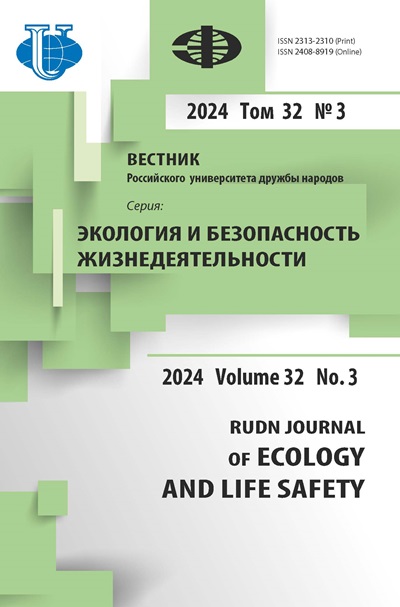Natural heritage and modern armed conflicts: ethical approach and international humanitarian law
- Authors: Gorbunov S.S.1
-
Affiliations:
- Peoples’ Friendship University of Russia (RUDN University)
- Issue: Vol 26, No 2 (2018)
- Pages: 269-272
- Section: Short announcements
- URL: https://journals.rudn.ru/ecology/article/view/20193
- DOI: https://doi.org/10.22363/2313-2310-2018-26-2-269-272
Cite item
Full Text
Abstract
In the short announcement, we offer an idea about International convention for protection of natural heritage in armed conflicts, based on principles of nature protection, international humanitarian and international environmental law.
Full Text
Modern ethical concepts include in the range of ethical responsibility not only relationships between people, but also the relation of each individual and society as a whole towards their living environment. In this announcement we would like to draw attention to the underrepresentation, as seen by us, of concern about surrounding life (at various levels of its biological organization) in the norms of modern international humanitarian law. The mankind still has not freed itself from armed conflicts. However, the degree of ethical development of man, as well as his scientific competence, has increased significantly. The efforts of the international community led to the introduction of the concept of world heritage, which is known to include both cultural and natural heritage of mankind. As for cultural heritage, a significant step forward made by the society in the XX century was the emergence of several documents and provisions in the international humanitarian law protecting it from the impact of armed conflicts. One example of this is the Hague Convention of 14 May 1954. As for the world natural heritage, you can only find a partial reference to the protection of the environment from the impact of armed conflicts under international humanitarian law, e.g. the Additional Protocol to the Geneva Conventions of 12 August 1949, relating to the protection of victims of international armed conflicts and adopted in Geneva on 8 June 1977 (Protocol I), and the Convention on the Prohibition of Military or Any Other Hostile Use of Environmental Modification Techniques (Annex to UN General Assembly resolution 31/72 of 10 December 1976). However, we consider the measures imposed by existing instruments insufficient for full-fledged protection of the natural heritage. To fully protect it, we should shield it from any impact of armed conflicts, being guided first of all by the ethical principle of nondestruction of the surrounding life. These should be basic principles: 23. Outstanding areas related to natural heritage category should be demilitarized and undefended. Conversion of natural heritage areas into fully demilitarized zones means that conflicting parties are forbidden to extend their military operations over there. 24. Any exploitation of natural heritage for the benefit of conflicting parties should be prohibited. 25. Normal and safe operation of organizations directly engaged in the support and preservation of natural heritage objects in the conflict zone should be ensured. In fact, today the society as a whole and the international community in particular are facing the question of the need to develop new and efficient terms of international humanitarian law which would ensure safety of surrounding life in case of conflict. Perhaps these terms may be set out in a separate document of international humanitarian law, or assume the form of additions to the existing documents. In any case, the main and fundamental part in this case is played by the ethical criterion, indicating the fundamental value of life around us. As conclusion we offer an idea about International Convention for Protection of Natural Heritage in Armed Conflicts, based on principles of nature protection, international humanitarian and international environmental law.×
About the authors
Svyatoslav Sergeevich Gorbunov
Peoples’ Friendship University of Russia (RUDN University)
Email: svy-gorbunov@yandex.ru
Postgraduate Student, System Ecology Department, Ecological Faculty, Peoples’ Friendship University of Russia (RUDN University). 8/5 Podolskoe shosse, Moscow, 125481, Russian Federation
References
















